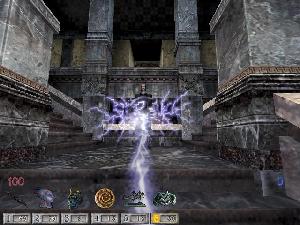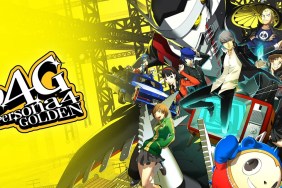The One Power vs. The Force – I’ll be taking bets.
It used to just be magic, or divine intervention, something wild and unexplainable. In the summer of 1977, we all got introduced again to the concept of ‘something’ out there from which you could draw power and fight the good fight, save the princess, and make serious cash at the box office. That something was simply titled ‘The Force,’ which would have seemed silly if not for the fact that it actually sounds pretty darn cool coming from James Earl Jones.
Nearly 2 decades later, author Robert Jordan takes the fantasy world by storm with his Wheel of Time series. His books involve heavy manipulation of something a lot like ‘The Force’ – you know, some sort of central magic pool from which all the sorcerers draw power and make some neat stuff happen.
Unfortunately, the name of the hocus pocus sucks. I present to you what may very well be the silliest ‘Force’ knockoff I’ve ever heard of: “The One Power.” Ugh.
Stupid fantasy rip-offs aside, however, The Wheel of Time makes for a pretty cool game.
In The Wheel of Time, Jordan’s world has been crafted into a first person shooter. The Dark One is being kept in the underworld merely by the strength of a few seals that are under the protection of the Aes Sedai, women who can channel The One Power. In a move that must have been inspired by Betty Friedan, The One Power is tainted so that all men who attempt to use it are driven insane and do bad things – sort of like an automatic punt to the Dark Side, poor Luke…
You play Elayna, a member of the Aes Sedai who can only use The One Power by channeling it through ter’angreal artifacts (as opposed to just going ‘ghuh,’ waving her arms and having a statue rise out of the ground, like in the intro movie). You are sent to investigate the encroaching evil after The White Tower (home to the Aes Sedai) is attacked by a dude with a lousy beard, a high voice, and an earring [Hey, that sounds like me! – Ed.].
The single playing game involves running around and blasting stuff, just like any other FPS on the market. However, the fantasy settings are extremely well done, the weapon design is superb, the AI is generally good, the atmosphere is high, and the difficulty is way too hard.
The multi-player is another story, though. Although standard deathmatch is included, the much more complex ‘Citadel’ mode takes center stage. In it, you are given a citadel in which to set traps, position a few troops, and carry out other defensive measures, almost like a real-time strategy game. The other player or team attempts to take seals from your citadel and you attempt to take seals from theirs. It’s one of the most involved, deep multiplayer experiences available in the First Person Shooter market and ends up being what distinguishes the game in the end.
In order to present all of this, developer Legend Entertainment elected to use the Unreal Tournament engine to create Robert Jordan’s spectacular world. The results are fantastic.
Quite simply, no one has ever created a FPS with architecture this good before. The Wheel of Time captures indoor environments from Libraries to crumbling Necropolises better than any other game in history. The outdoor levels feature fully 3D trees and the indoor levels are modeled down to the individual brick. Characters are modeled well and most spell effects are flashy, though a few rely on sprite based effects that lack the panache of the fully 3D spells like Chain Lighting, which creates a fence of crackling electricity around you that lashes out at anyone in range. Considering the extremely adept texturing, it’s all very, very impressive.

The weaponry is another of Wheel of Time‘s strong points. There are about 40 ter’angreal in the game, each of which performs an offensive or defensive function. The weapon effects are designed so that for every offense there is a defense, for every action there is a counter. The sheer number of effects means that scrolling through them can be difficult (especially in the brutal Deathmatch). Once mastered, however, Wheel of Time shows itself to have what may be the very best designed weapon systems on the market.
As much as The Wheel of Time will wow most any gamer, it stills shows it flaws. For starters, all that graphical goodness comes at a price. The Wheel of Time is nearly unplayable at the higher detail settings on anything less than next year’s killer system. That leaves most users playing at lower detail settings at no more than 800×600 resolution which, although nothing to scoff at, pales in comparison to what Wheel of Time can be when fully jacked up. Also, Legend did not do a perfect job tinkering with the Unreal engine, and there are some definite graphical glitches under certain video cards and modes.
Most unforgivably, the compelling Citadel mode is unavailable to play offline. Although The Wheel of Time is built on the Unreal codebase, there is no Botmach option to play a simulated multi-player game like there has been in every other Unreal engine game. This means that the best part of the game is completely unavailable to everyone who doesn’t play multiplayer, and that there is no way to practice what is essentially a brand new multiplayer experience.
These problems, along with some wicked difficulty, mar what is otherwise a truly great game. It still has an intriguing story, terrific graphics, good solid FPS gameplay, and an extremely well developed fantasy theme. However, that falls short of what the game could have been. If Legend had seen fit to integrate the Citadel mode into the single player story, include the botmatch, ease back on the toughness, and iron out the technical issues, this would have been a real winner. As it stands, it’s simply a very good game who’s flaws slap you in the face, much like the cartoon version of Lord of the Rings. And don’t get me started on that…

-
Good, Solid First Person Shooter
-
Excellent Citadel Mode
-
Fantastic Graphics
-
Cool Weapons
-
Weapons Difficult To Master In Deathmatch
-
Cool Graphics = High System Requirements
-
Citadel Only Available In Multiplayer











